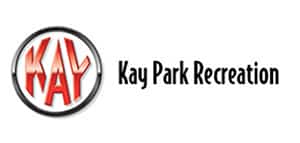By Rick Ritacco
Across the nation, greening initiatives have moved educational institutions of all kinds—public and private, religiously affiliated and non-religious—to examine their facilities’ every corner for eco-friendly opportunities.
It stands to reason that an increasing number have considered the restrooms; after all, in any building where scores of people convene, the restrooms may well be the most frequently visited areas.
What schools and other high-traffic facilities have found here is a surefire way to dramatically reduce energy use, maintenance, labor and waste, as well the associated costs of all of it, with one simple change: throwing in the towel.
Longmeadow High School, Longmeadow, Massachusetts
It will be four years ago this fall that the southwestern Massachusetts community of Longmeadow formally dedicated its proud new construction—celebrating a near-decade of proposals, planning and perseverance toward a better-built high school.
“We sat with the architect for a year and a half to design the building, and the build itself took a year and a half,” said Lawrence Berte, the since-retired longtime principal of Longmeadow High School. “The students wanted to have this new building be modern and up-to-date, and we wanted a facility that implemented environmental best practices.”
One of those best practices was the installation of high-speed, energy-efficient hand dryers throughout the facility.
Longmeadow High chose the hand dryer that created the high-speed category of hand dryers, with a dry time of 8 seconds (as tested to guidelines from the Global Hand Dryer PCR published by UL Environment) and the first to be BuildingGreen Approved.
Further, the dryer uses 80 percent less energy than conventional hand dryers and represents a 95 percent cost savings when compared to paper towels, eliminating their labor, maintenance and waste.
Subtracting waste and maintenance costs
For Longmeadow High School, which has approximately 1,000 students, 100 teaching faculty and a support staff of about 25, cost savings was an important factor in choosing the original, patented, high-speed, energy-efficient hand dryer.
“With a building that has that many people coming in each and every day, not counting the public, that’s a lot of paper that would be used in a restroom,” Berte said. “You not only have the use of paper towels, you also have disposal and maintenance costs.”
To be specific, Longmeadow High was spending $9,750 a year on paper towels and their related maintenance costs. Since making the switch to high-efficiency hand dryers, the school’s hand drying expense has plummeted to an annual $374.40—representing a 96% savings over paper towels.
In addition, the dryer’s modular design and low failure rate make it one of the most reliable and easy-to-service hand dryers on the market.
“The dryers have worked and functioned very well, so our custodians haven’t had to worry about that aspect,” Berte said, also citing the traditional problem of paper towel-clogged toilets and sinks. “A high school is a high school, but we have those things eliminated going the dryer route.”
Longmeadow High School opted to install the new hand dryers not only in the restrooms, but also in other areas that waste a lot of paper, including locker rooms, art rooms and science rooms. “Anywhere we could reduce paper with a cost- and energy-efficient hand dryer, we did so,” Berte said.
Learning green
For Longmeadow High School, the whole building process was used as an educational tool to teach the students about the importance of sustainability.
“We had a lot of discussion about how we were going to make this an environmentally friendly school,” said Berte. “Those green initiatives and environmentally sound practices have been incorporated into our curriculum work as well.”
The new school itself has received positive responses from students, faculty and the community as a whole. The previous building was considered significantly dated, its lack of space, technology and light a common complaint. The new construction has provided the school with these critical elements that it had long missed.
“Plus, the kids have a different attitude here,” Berte said.” When they see the dryers or any other new products in this school, they tend to take care of it.”
Sacramento Unified School District, Sacramento, California
Meanwhile, on the opposite coast, the Sacramento Unified School District had been working on strategic plans centered on the theme of “putting children first,” a major piece of which was to provide safer, more sustainable learning environments.
Josh Ingram, facility operations manager of the Sacramento Charter High School (Sac High), took a good look at the school’s purchasing and quickly identified paper towel consumption as a major problem.
Sac High was using over a million paper towels a year, at a cost of almost $18,000, without accounting for labor, maintenance, and waste removal fees.
With the help of Kent Jones, Sacramento City Unified School District’s facilities operation specialist, Ingram began to pursue the most cost-effective alternative to paper towels.
Doing their homework
After a series of testing and comparison of other brands, Sacramento City Unified School District facility maintenance managers narrowed in on the original, high-speed, energy-efficient hand dryer.
A customized cost-savings analysis revealed that switching to the dryer could save Sac High almost $17,000.00 annually—a 97.96 percent savings versus paper towels—and eliminate 5,587 pounds of paper towel waste a year.
“The high-speed, energy-efficient hand dryers are helping to reduce our operational costs by lowering our paper towel consumption and reducing the amount of labor needed to maintain our facilities,” said Jones. “Each dryer’s compact size, high volume output and durability also make it an outstanding choice for our urban school district.”
In addition to calculating monetary and energy expenses, the customized cost-savings analysis was able to evaluate key variables to address the school’s environmental concerns.
The report estimated the high-efficiency hand dryers would reduce the school’s carbon footprint by 80.73 percent, which the United States Environmental Protection Agency (EPA) estimates an equivalent annual savings of 104 trees, 18.48 cubic meters in landfill space, over 123,000 gallons of water, and emissions from over 116 gallons of gasoline.
“They’re saving us time and money while also reducing our carbon footprint, which is a great lesson for our students, too,” said Farah Wissinger, environmental sustainability manager for Sacramento City Unified School District. “We plan to continue installation of the dryers throughout our school district.”
The planning team selected custom covers—an option available, through custom imaging technology, for every hand dryer in the product line—that convey a sustainability message for all to read.
Two restrooms at Sac High were retrofitted with the high-speed, energy-efficient hand dryers.
Ingram reacted to the impact stating, “These are our busiest bathrooms; I was always cleaning things off the floors and sinks. Now these are the easiest bathrooms to clean in our whole school.” When asked about the benefits and overall impact the new dryers provided to Sac High, Ingram had only one question for their innovative manufacturer: “Can you send more?”
Rick Ritacco is director of marketing at Excel Dryer, www.exceldryer.com. Excel Dryer has been manufacturing the finest American-made hand dryers for over 50 years and, with its invention of the original, patented, high-speed, energy-efficient XLERATOR, created the high-speed category of hand dryers.










